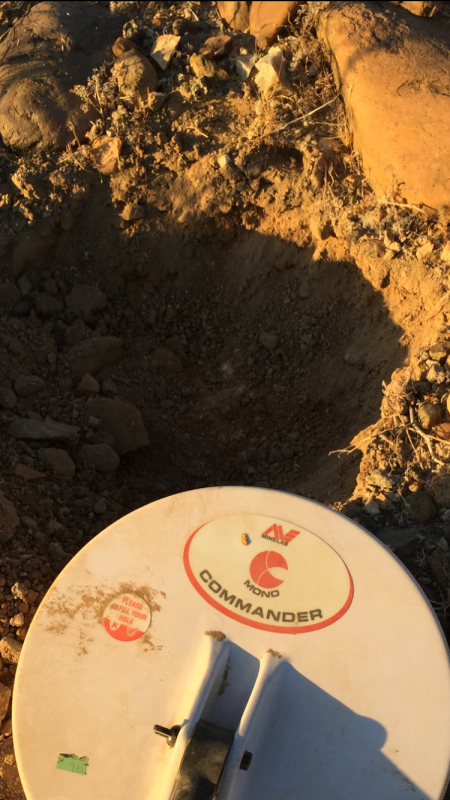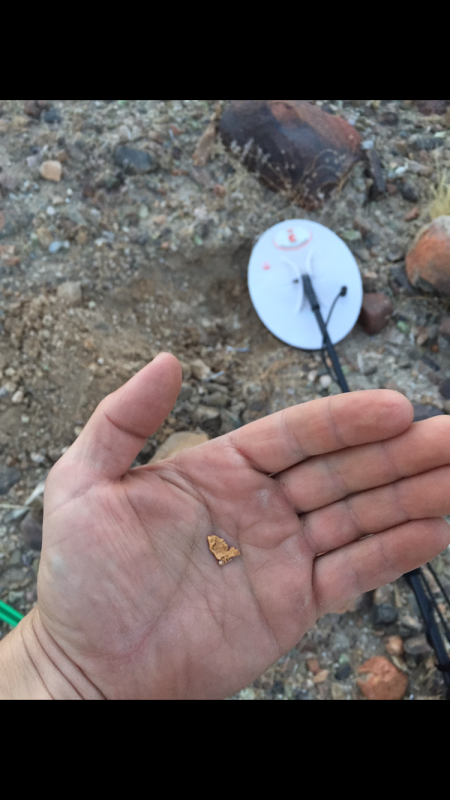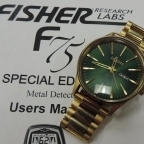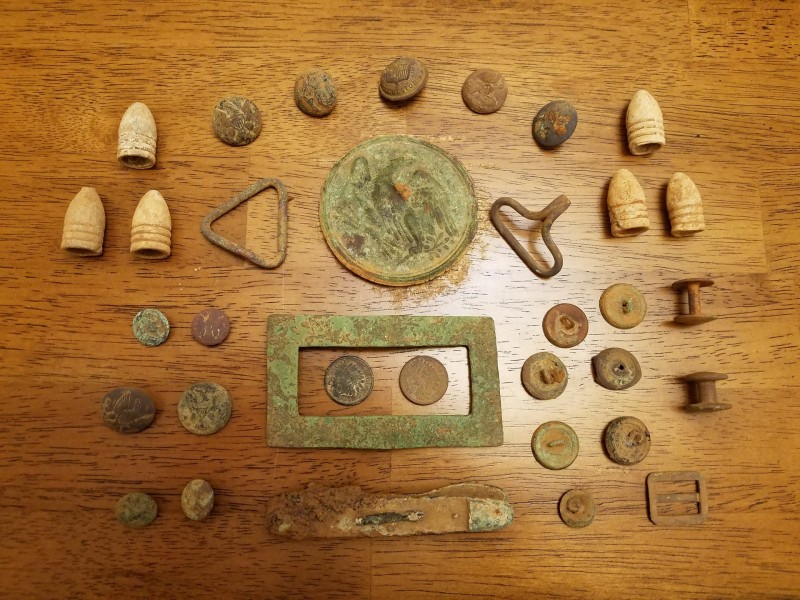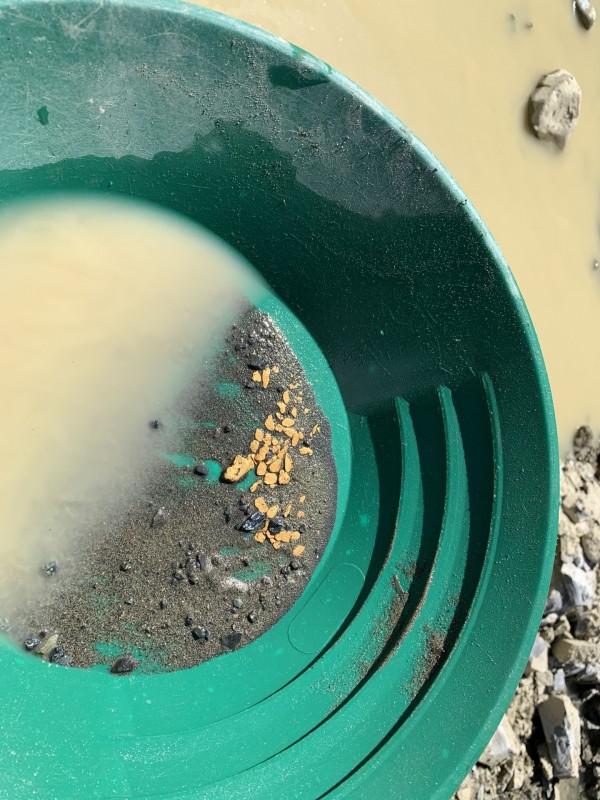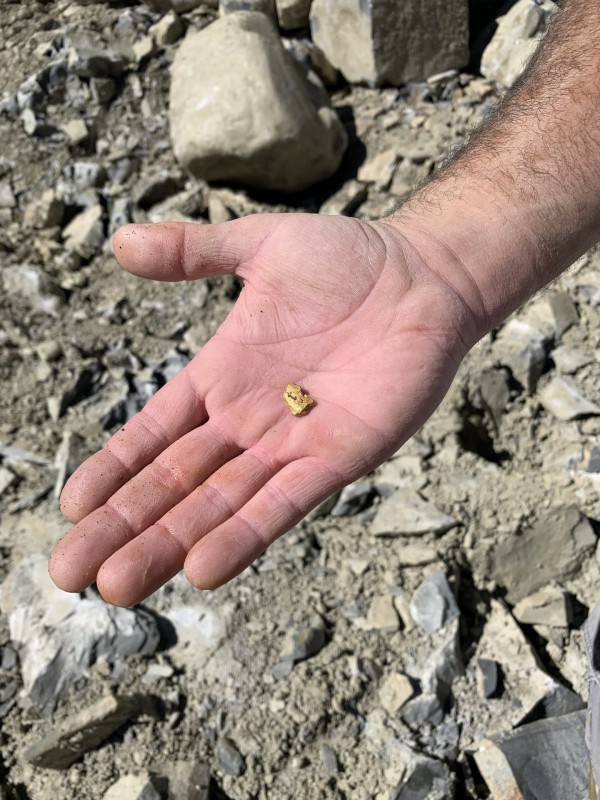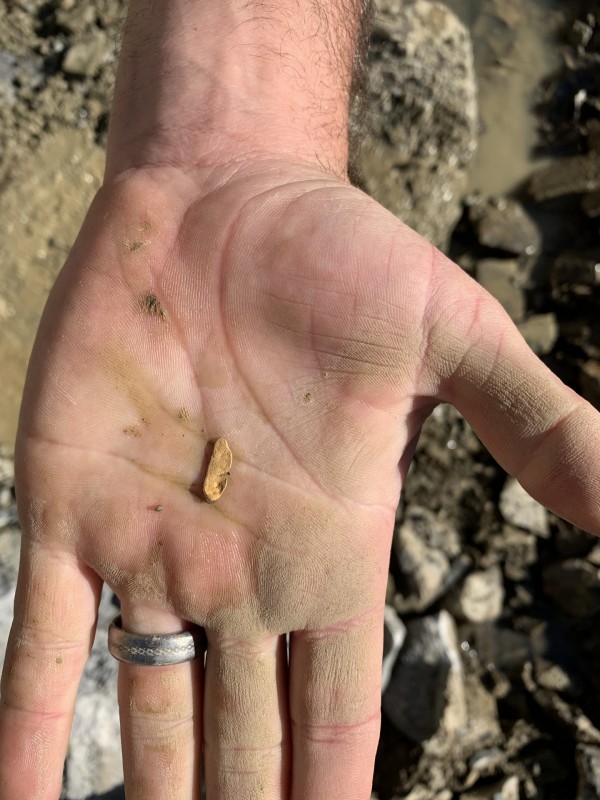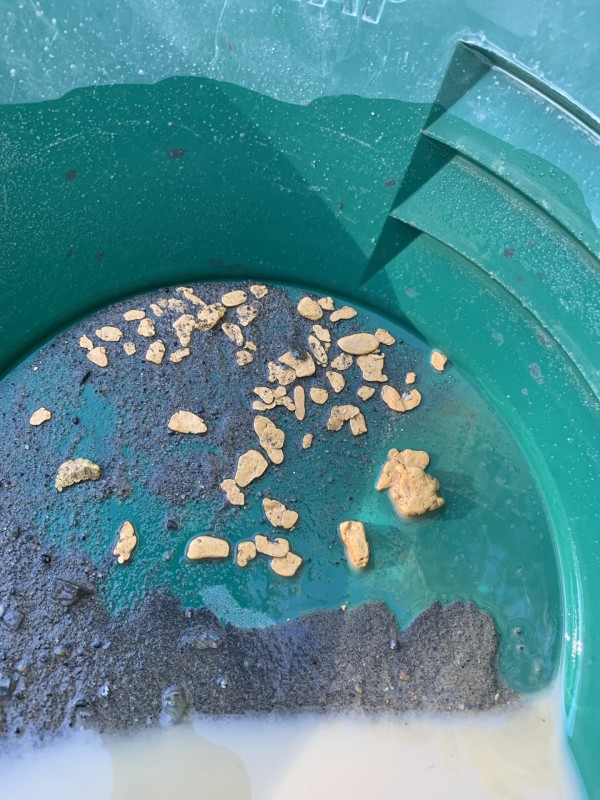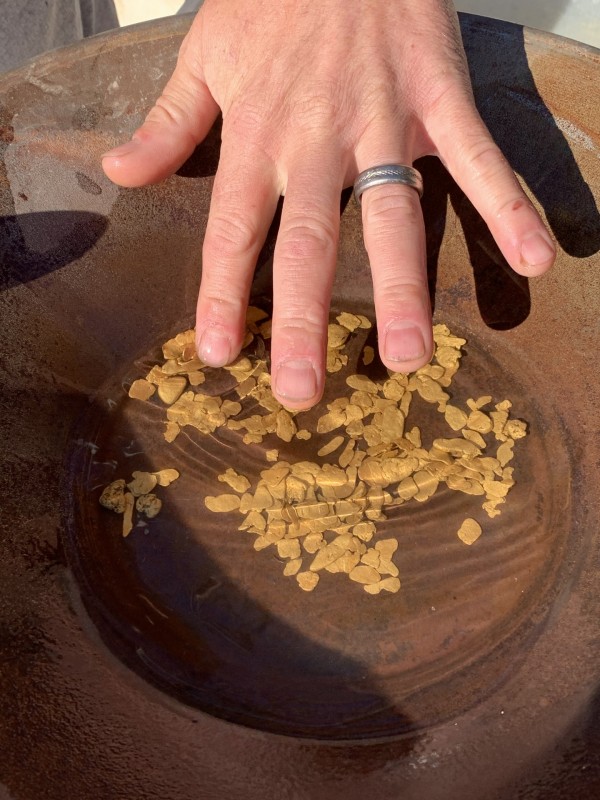Leaderboard
Popular Content
Showing content with the highest reputation on 12/11/2020 in Posts
-
Vanursepaul recently posted in a thread somewhere a picture of a pair of thongs he had. I posted some remark about how they looked ideal for out here as the Double Gees nail regular thongs to your feet and asked what brand they were. He replied how they were not off the shelf and he had them made...most likely at some expense. Low and behold this morning I find a private message asking for my size and mailing address as he was going to get a pair made and send them to me. I've declined (hopefully politely) as I've ran with his idea and will make a set myself. I just wanted to acknowledge the calibre of a bloke who would make such a generous offer to a complete stranger on the other side of the world. Thankyou sincerely Paul for the very kind and generous offer. Cheers, Steve10 points
-
Given the high value of these books I think it is wise to preserve an individual digital copy. Keep it on you phone or Ipad and the original safe at home. Personal use only, not for sale or distribution. Ok it is not a rare manuscript or rare hand written bible, but Larry Sallee's book may possibly be even harder to get. Took me years to find a copy that the seller was prepared to ship over to Australia. I've read mine over and over again. Highly recommended regardless of what machine you swing. Electronic prospecting requires a broad skill set and I found reading books on the subject very informative. Partnering up with more experienced prospectors is the best way, but reading sure does help. All the best.6 points
-
This was my first multiple gold day since my 7 gold ring day in July. Both the earring and cross are 10K. The cross has 120 small diamonds on it. Sure makes it shinny in the sunlight. The bracelet is SS and is a 2020 Graduation bracelet. Other earring is a junker. I used my Equinox today. Impulse AQ has been sent back to First Texas again. ☹️6 points
-
4 points
-
Quick video of a recent trip that had a long list of sites to check out, and wouldn't you know it an old back pocket site of mine turned out to be the best of all.4 points
-
4 points
-
Excellent point, and one Steve H. has made so many times that I think he got tired of saying it and just bows out on the topic. I do think native gold detectorists in particular are especially sensitive to this. They typically have to deal with such different ground conditions (even widely varying on a local scale) that they tune their detectors for the site every time out, and sometimes even in the middle of a hunt. Many carry nuggets or pseudo-nuggets (small lead) with them and start the day by putting those in the ground at varying depths, tuning the detector to maximize their signals. The key, IMO, is to know what the different settings mean and how that affects performance. For the Minelab Equinox, the key settings are choice of modes followed by Recovery Speed and Iron Bias. Even selection of single frequency vs. multifrequency and which single frequency to choose can apparently squeeze out some targets that might otherwise be missed on occasion. Secondarily (for the 800 model), setting # of tones, tone breaks, tone volumes, and tone pitches help one's brain focus in on the targets of interest. (Notching has similar effect, and most modern detectors have some level of that.) So, yes, tune your detector for your site conditions. A good mantra that unfortunately many of us (myself included) too often forget to apply. P.S. I failed to mention Noise Cancelling and Ground Balance adjustment in my 'keys'. I guess those are so second nature to me, and they typically tell you when they are set incorrectly. But according to some knowledgeable detectorists, sometimes they can remain silent and still not be in their best positions, leading to suboptimal performance. Simultaneous Multifrequency detectors (at least the ML Eqx) use the multiple frequencies to effect a ground balance which is why the Eqx manual downplays the need to go through a ground balancing procedure. But there is evidence that taking the extra step helps.4 points
-
Alas its not as easy as picking other folks brains on what settings to use,what settings works for someone will not necessary work for anyone one else.How a machine is setup across the pond for the local coinage and conditions in your specific location can be totally different to how we setup a machine here in the UK. Things like ground conditions,metal used in the coins and coins size ie for the most part in the US the coinage is milled and to a certain extent a consistent standard in the metal/s used so you can be pretty certain of the consistency but here in the UK for many 100s of years the coinage was hammered and not milled and the size although pretty standard for each specific coin/s the purity of the gold and silver can vary by a massive margin and is basically dictated by how the economy was doing at the the time if it was going through a lean time then the silver quality could be reduced by a fair amount and i guess gold could also be as well but not to the extent of silver coinage and other silver artefacts. Also another factor and a major one as well is what is the ground conditions and also are the soil condition pretty clean or is alot of trash due to human habitation around the detecting site,if its a trashy site then one would not use the stock or large coil so this then could also means possibly using the smaller coil and then you would also need to adjust settings accordingly. In detecting no one set of settings do it all,you can also get a high amount of different suggested setting that folks could post up but non may work as we dont have the full knowledge of your condition.4 points
-
Given that the latest crop of detectors can be updated with new features simply by downloading software updates, how long will it be until manufacturers offer a cheap base model with pay as you go additional features and capabilities. Want more tone options, prospecting ability, custom frequencies, simply pay a small fee and download to your detector. On the same token have to ability to remove unused or unwanted features to de-clutter your detector, and with the ability to load them up again at a later date as needed. This would give the ability for a beginner to grow with their simplified base detector, adding new features as experience is gained and as budget allows, whilst still maintaining a budget initial purchase price. We also often talk about detectors being too overwhelming or complicated to learn for newcomers, so sometimes less is more. The downside for manufacturers is that it would do away with multiple models of detectors, often earmarked by minimal incremental changes to justify producing a new or improved detector. Good for the consumer, maybe not so much for profit margins. In a way it is already happening with detectors like the XP Deus, with constant updates to extend the lifespan of the platform, though hardly a budget detector and the updates are actually free. Any extra costs/profits are made via accessory coils and other add-ons like pinpointers vs charging for added features alone (some new features necessitate the purchase of new accessory coils to be activated). You do have to appreciate that the Deus's lifespan amazingly started out in 2009, proof that a single platform can last the test of time and still be relevant even today. Imagine a base version of an improved Simplex with added hardware/software ability to run multi-frequency and/or individual frequencies, then being able to unlock MF ability down the track as budget allows. It is not always the case the one can afford the initial cost of a fully loaded detector out of the box, nor want to purchase multiple detectors to gain added features and performance. Silly idea or does it have some merit?3 points
-
A problem software vendors (in general) had in the past with charging for upgrades is that someone would buy a copy/license and then pass it around to friends/coworkers. Even when there was a built in limit on the number of times the software upgrade could be used, eventually someone would hack into it, removing the valuable upgrade parts and posting them on the internet. I don't know if the software security designers were ever able to close these loopholes. Given how often metal detector hardware and software is pirated/counterfeited now, my guess is that the manufacturers aren't keen on creating one more seemingly profitable path only to have it stolen and then need to involve lawyers and courts. As it is now, a certain (significant) percentage of metal detector sales comes from units that hardly get used ('closet queens'). And if you're not sure which model in a particular line (e.g. Minelab Vanquish) is best for you, many will choose to get the most expensive one from the start. Those who buy low at the beginning may end up 'upgrading' to a higher end model, effectively buying two detectors. The manufacturers have us trained! Bottom line opinion is that I think your idea works, just not profitably.3 points
-
oneguy - I'd come out west for silver dollars as well. Most of the guys I know and hunt with have found one or more silvers dollars. More than a few have found a gold coin and couple - more than one. In speaking to my parents and grandparents prior to their passing - silver dollars were in very common usage here in the UTAH area. My grandfather owned a bowling alley and ice cream business. Both very popular. The till was emptied and frequent trips to the bank made with a big heavy bag containing the silver dollars (and other silver). My mom was one of those that had to haul it to the bank. Large transactions of silver dollars would be awkward due to weight, but my parents and their parents all had coin purses or pouches for the silver and other coins. It is common to find coin purse hardware (the frame for the working / opening end that has the snap) while out hunting the ghost towns and such. But I've yet to turn up the hardware and the silver / coins from a lost coin purse. When I was young in the 60's, the little rubberize squeeze coin pouches were popular with the kids for lunch money. But those faded out in 70's and change was eventually just kept in the pocket and bills in the wallet. Many women still have small purses kept inside their larger purse for coins, bills, earrings, credit cards and such. Here's hoping there are plenty more silver dollars and gold coins for us to find. Rich3 points
-
I agree big silver does weigh a good bit. I can't imagine carrying around $40-50 of silver in my pocket today. I'm completely ok if somebody back in the day swapped those heavy silver dollars out for a few gold coins and then managed to lose, misplace or stash them. I could do with finding another gold coin or more. When you see that reeded edge 🙂 ! Back to the original post - a big congrats to Cal Cobra for taking the time to put together the video. Glad to see Tom out putting the Deus through the paces in a ghost town. Interested if he's going to keep at it or retreat back to the Explorer 2 or maybe go another route. The Deus and 800 are my go to machines. I've used and had success with both in the ghost towns. Rich -3 points
-
I agree that over the entire country they weren't popular. The 'Wild West' contained a different breed in the 19th Century and apparently that carried over into the 20th Century. (See Tom_in_CA's post.) Want to find gold coins? Are you better off searching in the Eastern USA or the Western USA? Back then the population in the East completely dwarfed the West. Now California is the most populous state and many Western cities like Seattle, Phoenix, Las Vegas, Denver, Dallas Fort Worth, Houston, Austin,... are among the largest, and I didn't mention a single California city. If I want to find old paper money I'll stick to East of the Mississippi. If I want to maximize my chances of finding gold coins and silver dollars I'm headed West (after the pandemic's over, so you Western USA guys have several more months before you're threatened ).3 points
-
(Annual Christmas Poetry) Santa’s Fate One winter’s day, in ’82, Well, things were lookin’ mighty blue, Cause Santa’s sleigh was runnin’ late, And this produced an awful state. The kids was feelin’ mighty down. ‘Cause Santa might not get to town! An avalanche had closed the way To block their local Christmas sleigh. Now Santa’s name was Honest John, A muleskinner off and on, He cussed and chewed, he liked his booze And in a brawl, he was bad news. So, not your average Santa, no. But Christmas set John’s heart aglow That he could freight the gifts and toys To all those little girls and boys. His mules he’d garb in greens and reds, With antlers mounted on their heads, Then off they’d scoot to meet the train Down far below, out on the plain. So once again they did the same, But Fate had run a crooked game And choked the pass with tons of snow. So, Honest John was stuck below. A telegram he quickly sent, And this is how the message went: “Just meet me at the closest spot Where all that snow just ain’t quite got.” The folks was stumped just how to go Through all the piled up winter snow. Why, snowshoes might just do the trick To meet their hometown Old Saint Nick! The Sheriff rounded up a crew Of miners, ranchers, gamblers too With packs and bags they quickly went. This telegram to John they sent: “We’ll get to you just at that spot Where all that snow just ain’t quite got.” This news was something mighty big! So John, he danced a merry jig To know the good he done each year To fill that town with Christmas cheer Would once again get carried out, On Christmas Eve, without a doubt. Well, Honest John, he met that crew And filled their bags and packs up too. He turned his mules out far below Then snowshoed off across the snow. ******************************* On Christmas morn, the kids they found, With wondrous feelings quite profound, Their toys and goodies 'round the tree Just like the way things used to be. But Honest John was fast asleep. His promises that he did keep Had left him tuckered, plumb worn thin. Yet on his face, a peaceful grin. All the best, and a Merry Christmas to all, Lanny3 points
-
I have heard that There were certain states, like Montana, Idaho, and Nevada, where silver dollars (albeit common date morgans and peace dollars, etc...) circulated up till the early 1960s. Something to do with the reluctance to accept paper dollars. Or that these were silver mining states, which sought to bolster the silver mining industry. Or that the slot machines still accepted silver dollars. Or something like that. Hence Cal-Cobra's silver dollar is nothing but a 1940s/50s loss, and thus .... We can all take back the high -5's and atteboys. Ok ? 😉3 points
-
I'm betting that most of you detectorists have found a large number tobacco tags, just as I have. Up here the most prevalent tags are "stars", but from time to time others pop up as well. As a Museum manager I get almost as excited with a tag as a nugget. So, I started a collection of this chewing tobacco advertisement. Most 19th century miners smoked either a pipe, a cigar or chewed. I liked to hear from you guysabout your tag finds, if you care to. I've attached some examples and an ad from the 1890's. Oh, and a little poem from the era: When weary I are, I smokes my cigar. And as the smoke rises, Up into my eyes, I thinks of my true love And Oh, How I sighes!2 points
-
I found a prospecting entry today from the summer of 1997 that I’d like to post: “Most of the prospecting I get to do is in the summer (up here in Canada) because that's when things thaw enough to get out and root around. Well, one summer in the Omineca region of British Columbia, I was working with some miners who were stripping a large placer cut in an area that had historically produced coarse gold in quantity. They got down to bedrock and as they worked the excavation of the pit, the gold got better and better as they worked from the front (south) to the back (north) of the pit. When things got real interesting (that is when nice nuggets and coarse gold were turning up in the sluice) they hit a massive series of what the local miners called drift mines (they described drift mining as tunneling from a lower elevation in relation to the pay-layer to allow for drainage from seepage). Once the old-timers hit the pay-layer, they worked back and forth following the good pay. It could be done underground all winter long and the stockpiled material was then processed in the Spring. In fact, the entire back end of the pit had been roomed out (roomed is the term they used when the tunnels were so close together they went back and forth in a series of parallel tunnels literally taking all of the material from a pay layer, thus leaving a large underground pillared and lagged [wood that forms the roof of the room]. At any rate, the placer pit was now abandoned and scheduled to be refilled. They said I could poke around, but to stay out of the old drifts as they were dangerous. Well, that didn't take any convincing on my part. I have done a bunch of caving and rappelling but the tunnel works were there for well over a hundred years and the wet lumber had changed somehow and broke in chunks with the consistency of celery, nothing like wood at all. As I poked around, there was seepage everywhere, and the lagging on the ceiling of the tunnels was all cracked and caving. In addition, the pit was rapidly filling with water from the front to the back where I wanted to prospect, so I didn't have much time. The modern miners had displaced a bunch of the large upright pillars (large hand-hewn logs) with their machinery when they hit the drifts. I panned some of the material from the false bedrock and true bedrock they had scraped. There was a little gold, mostly small flakes. I reasoned that when the old-timers were putting in their pillars and posts they must have covered up some pay, even if it was a small amount. As well, I knew from all the work they had done (extremely difficult manual labor) that the pay had to have been excellent; the modern pit had proven that as well. So, I found a nice fat displaced pillar, levered it out of the socket with a large bar and carefully collected the material from around it and in the socket forming the bottom of the hole. I panned it out and man you should have seen the pickers! I scratched around the base of another pillar but I couldn't move it out of its place and yet I still found some more coarse gold. However, time was running out. The seepage was real bad and the upper bank material started to slough off from above, and let me tell you, when that starts to happen, it’s time to get out fast! All the gold in the world isn't worth a lick if you’re dead. Standing above the bank I watched as the wet material oozed down into the pit which then collapsed the bank, with a slurping sound, down into the cut. There would be no more getting the gold there anymore, it was kind of sad, but I had found out something truly valuable: anytime I come across old drift workings that are exposed by modern mining, if the conditions are safe, I'll happily gather the material from around those old pillars and pan it.” I found out more about the type of gold some of that false bedrock (I mentioned earlier) was holding on another day, but that’s a story for a later time. May you all find something golden to smile about, and all the best, Lanny2 points
-
2 points
-
I pointed on my screen where the signal was strongest, even told him to clean off the sticks and rubble...lol Finally he listened to me, and dug a nice a big chunk!2 points
-
I can say, that several times I was invited to a company that was engaged in checking the ancient city of the times "Kiev Rus" (Ukraine) (about 1200 AD). So, I checked the rest of the protective rampart around the city (what was left of it). It was mostly clay (not wet), gray-yellow in color, and I was able to find remnants of burnt (fire and carbon-soot) bricks. They were at a depth of about 1 meter from the surface, metal detectors showed nothing (we had Lorenz with a 2.5 meter antenna carried by two people). I was interested in the picture on the radar, and I reported that under us there may be hundreds of stoves, where there could be something interesting. We dug the object, and indeed there were burnt and covered with twisted soot stones. Small metal objects are visible during post-processing of the radar profile (when you are in no hurry and can play a lot with display palettes). In my experience, approximately 30% of objects are in real-time when they pass in the field (field shooting). The rest 70% can be detected during post-processing, when there is time for many profile runs in a processing program with different mathematical filters. For example, an object near the city of Kaliningrad. (former Germany). In this place, there was a suspicion of an underground bunker, in which there were some objects. We managed to shoot. Filming (see the profile picture) showed the presence of an underground cavity with some boxes inside of which objects have a chaotic orientation. It is visible as "ripples up" above the boxes. See the picture. Pay attention to the area (picture above) 300-450 (green numbers at the top of the scale). This is a screenshot from the georadar screen, Easyrad program. I have a "source file" of the footage and can play with it using different palettes and filters. If I apply other filters, and cut the frequencies of the rad to high (cut off the low frequencies, i.e. leave only the return of frequencies from small objects), then I will get this picture: Pay attention: it was the reflections of a higher frequency (from 480MHz to 800MHz) that appeared here and the "ripples" created by multiple reflections became more distinct. If we leave only low frequencies (80-500 MHz), then we will more clearly see the bunker itself and something big in it (300-450 in green numbers): Unfortunately, the bunker had a "secret", when trying to excavate the bunker, the excavator damaged the waterproofing, and the bunker was flooded with water ... Unfortunately, the fate of the object is currently unknown. Due to the outbreak of the 2014 war.2 points
-
Such a paid detector upgrade capability has been here in the past ... for upgrading the first Whites prectra Vision and V3 models to the newer V3i model, as well as Fisher for upgrading various F75 models to the newer F75 v2 DST model. Rutus on the Alter71 v.1 detector also gave the possibility to upgrade the software to the Alter71 v.2 version - which I consider to be very successful... The idea is good only if it is mutually beneficial for both sides of the Manufacturer, as well as the user-detector ... don't expect that every upgrade can still be free ... so it can't work indefinitely .., software and hardware development takes money..and it's not free .. It's similar to a lifetime warranty on a product ... it can work for several years, but not endlessly .. several companies have already paid for it .. First of all, if you want to upgrade something meaningfully ... then the hardware of the product must meet a certain technical level..and then it makes sense .. sometimes the entry level detector does not make sense to upgrade strongly ... because technically this detector will not reach the required parameters that we would expect after the software upgrade .. But ..We can expect this with detectors that are technically prepared for such possibilities .. Another option is the sale of additional hardware .. - for example, the company XP is the sale of new HF coils and X35 coils .. which move the detection options further compared to the base ... On the other hand, there is a limitation in backward compatibility with older LF coils in the lower model XP ORX detector ... which I consider a logical step.2 points
-
No worries mate I get close to you when I’m in Meeka, but have never made the trip up to the station. Maybe the next year. i can only watch so many YouTube videos of that red dirt and hearing the wash gravel when someone is getting close. ✔️ i love that . Or when I hit the cap and my arms vibrate.. hahaha 🤠 If you change your mind I have to get the” Taskmaster” another pair. Should have known he could destroy them. Hope you have a great year!!! Lots of weight mate!2 points
-
Park 1, Recovery 3, Horseshoe off (accept all targets), 50 tones, FE2 at 0, and sensitivity as high/hot as you can possibly run it (and still keep it "stable" with respect to EMI). Steve2 points
-
One day after coil rcvd in Alum, PA I was notified a new coil is on the way! Cannot ask for better service2 points
-
Positive thinking is more important than most folks realize. When I am out in the middle of nowhere and talking to my detector, the gold gods and horny toads...I am at peace with my surroundings. This is when my ears/eyes/senses are most alert and the little beauty nuggets decide its time to quit running from me and surrender. If a prospector is worrying about what someone else is finding, or if there is even gold in the area, chances are they will walk over a soft sounding deep target. If you get to a point that needing a drink of water or needing to take care of other business (where's the toilet paper), then most certainly take the break as needed. As you say, "it is like your detector is a dowsing rod" Self confidence and positive thinking should never be ignored.2 points
-
The joys of summer heat 🥵, early first light starts, gulping of coffee then the inevitable knuckling of sleep out of rheumy eyes as you ‘head fog’ drive the 20 minutes or so to secret dusty locations only ever visited in summer after the sweaty crowds have gone home to roost. I prefer it if there has been a few thunder storms to wash away all the tyre tracks and footprints, the myriads of patterned phycological evidence that beta-blocks the feeling of success right out of your very soul before you even start the first swing of the coil. 🥴 Argh yes the joys of summer bring on the freshening. 🤣 It’s been 2 years since I scored anything decent at this location, I’d given it up for dead but always find myself drifting back to try something new, just that one more time.2 points
-
Hello! I’d like to hear from some folks experienced with the GPX detector sounds. There is a lot of talk out there of how much quieter these model detectors are over their predecessors, but I am not so sure. I have found that hot rocks my old detector would scream on are ignored, though as for noise, there is a lot of it. I’ll do my best to describe what I hear in a relatable way, a bit deeper than the general listening to little harmonicas in the headphones. To begin, I can absolutely discern a nugget response. I am lucky enough at this point to have found nuggets every day detecting with this detector since I’ve owned it. But questions, they have arose and I hope that by sharing my curiosity and (hopefully) receiving feedback, I may learn to use this machine more effectively and shine more light into the world for other GPX operators. I thoroughly believe the ground I have been hunting is quite hot, maybe even on the severe side. I have not been able to run my detector very quietly at all. Don’t be too harsh on me for saying this, but I have not tried running it in Sens Ex yet. Fine Gold is finding me nuggets fairly easily with a Gain of about 8, Stab about 10, Tracking fast, and Motion medium. I tried out Enhance once and it didn’t seem to make a difference, so I stuck with what’s been finding me nuggets (3 trips-14 nuggets). The noises, I’m looking for some confirmation or identification if you can deduce my rough descriptions. First I suppose I will start with the threshold. This sound I believe is very obvious to pick out, to identify it I simply adjust the threshold up until it’s loud and obvious, then I turn it down until it’s hidden and then back up until it’s quiet yet something I’m able to focus on. Now sometimes this very faint drone will go blank for moments, but so far I have not found an instance of it being repeatable. What’s happening? Other times it seems like some sort of audio boost kicks in without any changes in volume or pitch, almost like just another layer of the same sound is being superimposed over the threshold and noise, also no instances yet of repeatability. What’s this? Second, I’ll ask about ground noise/ground balance. I seem to be getting quite a bit of noise from the detector which I am assuming is, the infamous ground noise. I’d describe this noise as a chatter and all the likes of little burps and chirps that are not repeatable. Now I assume I could quiet all this down via settings, but again, I’m finding nuggets so I’m willing to endure for now even with the awareness I may be missing nuggets at the same time. But I think my big curiosity with this is the fact that sometimes it seems like I can’t ground balance. I even am careful to gb over multiple spots in case I was trying to gb over a target, but it just won’t smooth out. Though it seems to smooth out once I start going even though it wouldn’t during gb. Is this common at any level? I made a sorry attempt at a specific balance once, but I was finding nuggets still, so I haven’t really been diligent about pulling off a good Sgb. Now my last noise question is about EMI. I can identify when I’m getting false bump and vegetation signals, but what I’m thinking of as EMI can be really bothersome and seemingly malicious! Is EMI the totally false booming signals that sound like a target but are not repeatable and also don’t really match up with my sweep speed? I’ve tried playing with some manual adjustment after doing a tune, because sometimes this noise that I’m thinking is EMI is so bad that I’ll do an auto tune every five minutes or so. I wouldn’t really think the area I was in would have so much EMI. Maybe the Sun has been a bit more excited lately??? I know I’ve just asked a lot and I have even more questions than this, but if anybody would be willing to even partially help out. I’d be very grateful. I’m very interested in the way that the GPX settings work and what’s actually going on even deeper than what’s described in the manual. So if there is any literature out there with some more depth into this machine, I’m asking to be guided. I absolutely love the GPX and I want to get a couple aftermarket coils for it now that I’ve seen how it is with the stock coils and reading about how much more of a performance boost some of the coils out there can give it. Thank you!!!1 point
-
Nice job. You are on a streak.... no pressure😄 Were you able to get an idea of how deep it was? I'm thinking there are probably more small rings left than big honkers. The really big ones are probably deep, hopefully out of reach of other machines. All the bigger new drops that are shallower, are being found by the competition. I went out yesterday to a small beach and had 3 other detectorists there already.1 point
-
And there's MORE where that one came from! Great to hear from you, Lanny! Gary Long1 point
-
What I liked about the book is the emphasis on signal clarity over signal loudness. Really opened my eyes early on to gain/sensitivity control, even more so when I witnessed just how bad my ground would mask small signals as I raised the gain. I could test my ground with a normal Daisy BB and actually hear it break up and disappear as I raised my gain. Real eye opening stuff. Good book to re-read every so often, especially if you have or hunt hot ground. HH Mike1 point
-
That is a neat find. Do you estimate 18th century or early 19th activity at that site? I suspect it is made of fired clay and would have had a wooden tenon fitted with a Cherrywood or reed stem. This suggest a "better quality" pipe than the more common all clay Tavern type pipe. You could restore it fairly easily for display. You could actually place it in the hot ash of a wood fire to rejuvenate it and it would come out clean and snow white just as it was when made.1 point
-
Yes, but these were implemented by returning the detector to the factory for the upgrade, right? There have also been reports here of First Texas upgrading the Teknetics Omega 8000 to the 8500 for free when in for repair for other reasons.1 point
-
I started detecting in the 80s mostly with dredging for gold , then left the gold country and ended up back in MN , got some more detectors with the intention of going back to northern CA - but dredging is outlawed [ bs ] and bought a bunch of detectors in the 90s and worked mostly parks & beaches walking the dog . Had a fire about 5 yrs. ago and lost about a quarter million in tools , equipment and about 6+ detectors . A little over a year ago , bought a Nox 800 , mostly did the FL beaches last winter , not sure if going back this winter . But I have been mostly doing beaches here in MN since coming back from FL just at the beginning of the codvid thing . 1st problem seems to be is most of the beaches I grew up on have replaced the sand beaches [ dirty dogs ;( with grass , and have been worked over / detected , but I still find enough for fun . 2nd issue is a good one , too many targets , that includes pull-tabs & bottle caps etc. , along with lots of coins at least $1 -$2 + per hour , not including jewelry - not much of that - this is where the amount of other stuff - money & pull-tabs & bottle caps - being older 67 , my arm / shoulder can only last about 3-4 hrs. , the space between all targets is most commonly about every 3" - 6" at least 70-80% of the time / area , and many multiple targets on top of / or right next to each other - having to pickout the trash to find coins . So finding jewelry is hard - have to dig lots of trash - to make sure I do not miss the googies . 3rd Now this is just theory for now , need to bring a kid out with me to do , what is very hard for me [ 3 different back injuries ] digging - the theory being that lots of coins going down 6"-8" and nothing older than about late 60s / 70s , so the idea is to have a young slave [ never did get around to having kids 😉 to dig a large area , maybe at least for testing 4' - 6' square and guessing at least a foot deep + --- to find silver coins . This should work good , because this area does not seem to have been found by other detectorist , I have never seen so many targets / coins . Oh this is a river that in the summer there are hundreds [ really ] of boats every day , and weekends it's almost bumper-to-bumper , and all the sandy areas are crowded / over crowded , lots of islands also , so have to have my friend drop me off those with his boat - while he keeps throwing fish back 😉 Now when I get the Nox 800 even just a little figured out / use to , too many hobbies , need to take time from other things to up to speed with the Nox .1 point
-
Nice gold!! Get it while it's hot 😄 It sucks about your headphones. I had the same issue but because of Covid I sent mine to Tony to repair. I didn't want to have them held up because of Covid work restrictions at FT and other companies. All those tiny diamonds must have looked nice in the sun and sand!1 point
-
Thanks, and I was concerned that the Barber wouldn't clean up well, but as I slowly pick off the dirt the silver beneath is fine. I have a bit more picking to do, but I suspect it could grade out as a VF40-45 once completed 👍 No they weren't my best finds this year, I actually had an epic hunt back in February before covid shut everything down:1 point
-
1 point
-
1 point
-
Second photo looks to be the bottom to a Frozen Charlotte doll. Looks like the upper body and head snapped off. Made of bisque porcelain. Very common play doll through the thirties. GaryC/Oregon Coast1 point
-
Yes Tom agreed, it's all about using the right tool for the job. A year and a half ago I got into an area just like you described. I always have my Deus in my backpack at these hunts and when I hit this area everyone else was avoiding I pulled out he Deus. Below is the finds I made in a half a day of hunting a very trashy hillside.1 point
-
Sadly no, they are not making anything at Garrett's with a White's name on it, BUT the woman that I spoke with at Garrett's office today eluded to the possibility of the Garrett engineers eventually doing something new with the White's product line. As of this time though, there is nothing but dust and an empty White's building...1 point
-
And that's just one more reason we in the U.S. never switched over to using the Metric System. You'll notice that many detectors manufactured outside the U.S. are not sold in the U.S. They don't work here! 🤪1 point
-
PI detectors are like shotguns when it comes to frequency, and transmitted frequencies is a meaningless number. The 96 frequency thing was actually an in joke, with Garrett tweaking Minelab over it's reliance on transmitted frequency claims in it's marketing. The ATX does have ground tracking, and the TDI does not, but the ATX tracking is no big deal - I always left it off. But it is nice to have available as a fallback position for truly extreme ground. Personally I have lobbied for many years for an ATX circuit in a light weight, less expensive, dry land prospecting version. The ATX is actually the newer, more advanced circuit over the TDI, and has far more room to grow. The main improvement would simply be upgrading the circuit and battery to allow for more power. But the current housing is a fail for most gold prospectors. I'm not holding my breath, but the shakeup does offer me a glimmer of hope. The easier path for Garrett unfortunately is to just leave the ATX as is, and slide the TDI SL into the lineup as the lighter, less expensive PI.1 point
-
Wanted to post some pictures to go with the last couple of stories from this summer: (Half an ounce of goodness found by my son with his X-Terra 705.) A 3-gram nugget he found on a lonely little shelf. A nice piece my son found all by himself, his first time using the 705 for nugget hunting (he has over 500 hours on it coin-shooting though). It seems to be good luck to wave your hand over a pan of gold before you start detecting, certainly worked for us! The main haul we both made the first day, largest piece 6-grams. All the best, Lanny1 point
-
A New Learning Curve My son and I loaded up our blue mule (Dodge 3/4 ton diesel) and headed for the mountains Friday evening.That meant we'd be doing part of the drive in the dark, and setting up camp in the dark, but when we're out chasing the gold, that's no hardship at all.Early the next morning, we did an equipment check: gold pans, a bucket full of sniping equipment, a couple of picks, as well as several detectors. On our way to check freshly uncovered bedrock, we wanted to make sure we had what we needed.My son had his Minelab X-Terra 705, a machine he's got about 600 hours on detecting for coins and jewelry (and he's done very well!), a machine I gave him a few years ago, but he's never used it to look for nuggets, so this trip would be a new learning curve for him.The 705 is a machine that Minelab put a lot of extra technology inside for the price-point at the time, and it had sniffed out nuggets in the past, so I knew it would do the job on shallow to gold bedrock that wasn't super hot.To leave camp that Saturday morning, we ignited the throaty roar of the diesel and left camp slowly, as in August the super-dry roads in camp are blanketed with fine clay dust that mushrooms a cloud of dust that goes everywhere.When we hit the main forest service track, we opened it up a bit more, but the washboard condition of the gravel roads wouldn't let us go too fast without shaking the truck to its core.Next, we hit the paved highway and made excellent time.It was a glorious, windless day. The sky was completely cloudless, the ceiling of air a perfect cobalt blue, the pines and firs a deep green that contrasted beautifully with the flawless blue sky.After seventy minutes, we finally arrived at the mine, this after leaving the highway then slowly navigating a logging road, one heavily rutted from recent haulage. The road included what the locals call "punchouts", places where the roadbed has been pounded through by logging trucks that leave dangerous soft sections. If you hit those sections at speed, the front end of your truck dives down deep and fast and you experience the "punch"! Then you come flying out. If you enter too slowly, and not in 4-wheel drive, you get stuck, so it's an ongoing challenge.At the mine site, the owner was chatting with the vacuum truck crew, the group cleaning the bedrock for the next couple of days. After his meeting, he told us where we could work away from the vacuum crew, but he also wanted us to check their progress to see if any gold was being left behind. We did from time to time, and we directed them to spots where they'd left some gold.To work the bedrock effectively, I made sure my son had a magnetic wand to deal with the never-ending bits of steel from the excavation. Moreover, with the bedrock super-hard once again (like last week), the magnet would clear the surface signals so the softer sounds of gold could be heard.We fired up our detectors. I chose the Gold Bug Pro as I love the digital meter on shallow bedrock as an aid to ID'ing the gold. Moreover, for any iffy signal, a quick swipe with the magnet usually solves the puzzle, or some quick pick and magnet work either tells the tale or requires more investigation. Furthermore, in several cases where the meter read lower than gold, the nuggets were sitting among pieces of magnetite (ironstone) that skewed the digital reading, but once the magnet had removed the ironstone, the gold signal was nice and clear.While I was collecting a nice catch of nuggets, my son was having some frustration with his detector due to all of the bits of steel, but he kept at it and at last he found two nuggets with the 705! Well, the dam burst after that, and he showed some innovation as well. When he'd get a signal that was strange, he'd quickly switch to discrimination, and if he got any positive response, he knew it might be a nugget. He kept toggling back and forth over the next couple of days to verify signals, and it worked out very well for him.The bedrock we worked was often broken in sharp slabs, so we had to be very careful while walking over and through those troughs of iron-hard bedrock as the footing was bad. To slip would be to get a nasty cut, and luckily, we avoided any injury until the second day my son did a nice circular slice around his finger when he reached too quickly into a crevice to check out a signal.In the bedrock, there were slabs of clay stuck to the sides of the troughs either where the excavator had broken chunks of bedrock out or where we used bars to pry apart sections. That sticky clay held the gold! Sometimes, after locating a target, we could see the gold stuck to the clay and only had to pry it out.I scanned a section of bedrock where there was a deeper hole. The excavator had hit a soft spot within that super-hard bedrock, and at the end a bedrock rise, there was a small pile of channel stones. I got a cracking response that turned out to be a six gram nugget! We kept at it until it started to get dark, and by the time we headed up to the mine boss's trailer, we'd caught just over an ounce of nuggety gold.The next day, I let my son go solo, and I only hung around to give him tips if needed. However, he did well fine tuning his own system of ID'ing targets by toggling back and forth from prospecting mode to discrimination. He kept gathering a nice collection of targets in the little orange bucket he threw his signals into. (Rather than take the time to visually ID each target, he'd throw them in the bucket so he could pan them all out at the end of the day.) As well, when he'd get a broad signal under the coil (which often indicates a concentration of flake gold), he'd scoop that dirt into the bucket as well.As darkness closed on that last day, he panned out the dirt in his bucket. He'd caught half an ounce of sassy gold! That included a three gram nugget he'd found through determination. He was detecting a flat chunk of bedrock that held lots of steel signals, but he kept swiping them off with the magnet. Then he got a good sound right on the edge of the flat bedrock where it dropped off into a pocket of water. He worked the signal with his pick until he popped it out, and that was how he found his nice nugget! Without removing the steel shavings that produce such a nasty racket in the headphones, he'd likely have missed the nugget.So, we got a 1.5 ounce bounce for those two days, but golden memories of a hunt together that will last a lifetime.All the best,Lanny1 point
-
Lake Placers #4I knew there were signals in the bedrock, and they sounded sweet, so I headed off to gather tools. We had a small sledge back in the truck, an assortment of rock chisels, and the Estwing pry-bar, the one that has the pointed chisel end on the bottom, and the flat L-shaped head on the top. Moreover, the “L” can be used to scrape or be used as a chisel as well to hammer into a crevice—absolutely beautiful little tool.Having rounded up the tools, I hustled back to the site. The most amazing part was that once I started to chisel out bedrock chunks, the original bedrock was indeed solid, but there was a natural cement of fine-grained, crushed black slate that had been running with the gold in the stream channel that created a perfectly camouflaged matrix, the matrix rock hard as well. In this way, Nature had hidden the original crevices perfectly.Using hammer and chisel, I worked my way down well outside the edge of the signal’s midpoint. I usually had to go down two to four inches to get below the signal, but then I’d insert a longer chisel and reef on it until the piece of bedrock and matrix popped out. Sometimes the piece would flush up in the air just like a game bird! (It makes sense now why my partner was on point like a bird dog.) After the first nugget flew, we made sure to block the flight path with a large gold pan. We couldn’t risk losing any nuggets in adjacent cobble piles.After recovering the nugget-rich matrix, I took the chunks and carefully tapped on them until they started to fracture and crumble. (As the matrix and the bedrock were of the same hardness, I never knew where the piece was going to fracture.) Having reduced everything to small pieces, I passed them under the coil to pinpoint the gold-bearing ones.After tapping away to remove the remaining residue, the gleam of gold was unmistakeable. Moreover, all of the nuggets had wonderful character, nothing flat, featureless or hammered. It was incredible fun liberating a dozen of those long hidden multi-gram nuggets.Did I smash any fingers while reducing the chunks? Absolutely. Did it hurt? If a fingernail goes black and falls off later, would that qualify? Regardless, the gold adventure was well worth the effort.In another instalment, I’ll talk about detecting the test-piles farther up that same placer claim and what I found in them.All the best,Lanny1 point
-
A Few Hours To HuntOn Saturday, my son and I headed to the mine in the mountains with only a few hours to hunt the gold.We arrived at the placer cut, and we could hear an excavator working somewhere on the placer lease.We looked over the bank and saw the mine owner working at stripping off the bottom fifteen or so feet of the sixty feet of overburden to get to the virgin bedrock underneath.As soon as I looked at his machine, I noticed something was wrong, so I got the operator's attention, and he shut his machine down. He opened the door to see what was up, and I told him he'd thrown a track! He was just about to turn his machine which would have caused a lot more trouble. He thanked us for flagging him down, then he made the long walk up the haulage road to have a chat with us.He was happy we'd come along when we did, and he yakked with us for a while. We learned that the motor on their largest excavator had seized the day before, and that they were busily searching for a replacement, but they were having a hard time as the diesel motor was a specific design with a special high horsepower build.We asked how the vacuum truck had worked at suctioning the bedrock my wife and I had tested for them last week, and he said their test had worked out much better than they'd even expected. In fact, from now on whenever they hit super-hard bedrock, they'll use the suction retrieval system to clean the bedrock.He told us we could go play in a spot they were no longer working where there was a small hump of bedrock protruding from an old haulage road.My son and I only had several hours to play as my granddaughters were at our mining camp that weekend and we needed to get back for a family cookout, so we unlimbered the detectors as well as the panning and sniping equipment and headed for the bedrock hump.My son took one end, and I took the other.It was a typical August day, hot, hot with perfectly clear skies, the blazing sunshine pounding the bottom of the cut. A brown and orange butterfly gently pumped its body up and down in front of us as we started to snipe likely looking spots. The gentle chuckle of an ice-cold spring flowing from the side of the cut was the only natural sound on that calm day.I tested a small area first with my gold pan; there was some friable rock exposed, but it held not gold. So, I dug around until I found a v-shaped crevice that held more material. The top part was gooey clay and rock hauled in to cover the bedrock to make the road; however, digging deeper, I soon uncovered intact ancient channel material that was instantly recognizable by its composition.I blanked on the first pan, but prying apart some bedrock and exposing seams of orange-stained clay, the second pan produced a nice piece of gold half the size of an oatmeal flake. That got my son's attention!He wasn't having any luck on his end of the hump, so I told him to hit my spot hard while I took out the detector to scan what I'd already cleaned. Sure enough, I found two nice pickers that were stuck to the clay on the sides of the crevice. I worked along behind him as he pulled out channel material, and when I'd get a broad signal, he'd pan the material out, and it usually held nice flakes of gold.I had my hooked bedrock scraper (spoon-shaped on the other end), and I scraped all of the material from the crack at the bottom of the crevice.My son headed off to pan it, and when he came back, he had two large flakes in the pan. Then I heard a whack and looked back at the pan, and he'd dropped a nugget in!The two gram nugget made the flakes look small, but the smile on his face was huge.We had to finish chasing the gold as it was time to start the seventy minute trip back to camp, but we'd rescued 3.62 grams of gold from an ancient channel, a stream bed that was last disturbed millions of years ago when the dinosaurs tip-toed through them.All the best,LannyP.S. My son also panned out 2.5 grams of gold from some virgin dirt we brought back from the outing my wife and I had last weekend.1 point
-
Lake Placers #2To get back on track with my lake placers stories, we fired up our detectors and asked the miners where we could start hunting. They laughed, and they laughed--loudly! They told us to have at it, but we’d get nothing but grief. They'd seen too many people get skunked in that goldfield over the years while trying to even get their detectors to operate at all, or to have it “squeak” on some gold (as they put it). Anyone who’d ever tried to detect had always been shut down by their severe ground.The reason for the failure of nugget shooters was the insanely hot bedrock. It ate detectors for lunch. (As they told us this, their comments were heavily dosed with colourful language. In fact there’s most likely a tapestry of profanity still floating over that lake!)Knowing I had a premium PI with me, and that they’d likely never seen one in action, I thought of trying to explain the good points of the Minelab, but I stopped myself and went hunting gold instead.In an earlier story in these placer tales, I mentioned the decomposed bedrock pockets peppering the big sheets. When I went to look at one closer, I found it was very wet. I wasn't sure how that would affect the detector, but I scanned a patch of it anyway, and right quick I got a nice mellow tone. One quick scoop and I had the target.I quartered the sharp little chunks of bedrock out of the scoop and soon had a sassy, 1.5-gram nugget. That find got the claim owner's attention! They said, “Come over here with that machine.” They then walked me over to another similar area and told me to try that spot. So, I tried it and got a signal right away. However, this time I never found a nugget but only one maddening false signal after another. They soon tired of watching, and shaking their heads in a “we told you so way”, they started mining again. Their body language said that the first find was nothing but a fluke. To them, the rest of my time would be wasted digging, as their black graphite schist bedrock was, once again, too hot for detectors.So, the miners left us to our detecting on the bedrock. Nonetheless, my mining buddy was frustrated with how useless his broken wrist was. It depressed him to be on virgin detecting ground while equipped with a machine that could handle the ground, but he could do almost nothing about it! Yes, he could swing the detector, but no digging, running the pick or sorting material in the scoop by himself.So, we worked together, he worked the coil, and I did the rest. By working together, we could help each other have some fun.We headed back to that loose bedrock where I’d found the gold. I’ve found through the years that if a trap worked well enough to grab and hold one piece of gold, some extra dedication on the same spot could produce another chunk as well.To describe the spot a bit more, the excavator had left a crumbled rise of about two feet. I started detecting up and down that little hump. Pretty soon, right near the top, I got a nice signal! It was that telltale Minelab, low-high-low tone. Although not as strong as the first signal, it was nice and sweet. With the signal close to the surface, it made it easy to get the target in the scoop. A nice, bumpy one-gram nugget was in the scoop.As I continue my lake placers series, I’ll reveal the beautiful things hidden in those solid sheets of red-hot bedrock, and later I’ll let you in on what we found in the miners’ test piles as well.All the best,Lanny1 point
-
Lake Placers #1(This story continues on after we heard the story of the giant nugget found on the rock pile just below the dam of the lake.)So, after we’d jawed with the rock-pile owner some more, we decided we’d better head up the trail to check out the lake placers. The gold runs up both sides of the lake, so we picked a side and headed on up.We weren’t in much of a hurry that day. My partner had a badly broken wrist, complete with a new cast plastered on just before we’d left home. So, we were taking it easy.While we hiked along, we enjoyed one of those gorgeously long, northern summer days: the warm, calm ones perfect for bottling, only to be opened much later on a frosty, winter’s day. Moreover, as it was summer, the sunlight that far north would last well after eleven or so, and then a lengthy twilight would continue after that.Enjoying that extended summer sun, we walked along the lake and saw the cutthroat, true ambush experts, rising in a feeding frenzy, hammering the various insects floating the surface of Nature’s fast food outlet. That healthy population of fish was likely why the locals had never un-dammed the creek at that place.As we continued up the lakeshore, a breeze periodically stirred the surface of the water, yet calmed quickly, allowing the trout to continue their feeding.Along the borders of the lake, the willows waited patiently for a new breeze to whisper up the shore the news of our coming.At last we reached the claims we had permission to hunt. There was evidence everywhere of shallow surface mining that had exposed the bedrock in great sheets. That bedrock was mostly iron-hard, as the D-8 Cat that had just finished scraping was only able to cut into small sections of rotten bedrock. The rest of the bedrock was a hardened nightmare. Even the excavator had skipped and skidded across most of it as well. This had frustrated the placer miners as the area was known for its coarse gold.To backtrack a bit, about a month earlier, I’d been on a gold-scouting expedition. I’d made the trip with an in-law of one of the miners. The bedrock spot I’ve just described was the first place he and I visited.The placer miners, a couple of brothers, were then working on one of the lake claims, but when they saw us, they shut down to chew the fat. That’s the way of the remote north, any visitors or news from the outside is a welcome break. So, we yakked and caught them up on events.As we talked, one of the brothers started to clean the header on the wash-plant's sluice. He lifted the screen off the box and scraped material into a pan.All at once he stopped his scraping, reached into the header-box and tossed something straight at me. I was caught completely off guard by the toss, and the only thing that saved me was reflex.Luckily, I caught what he chucked, and it was heavy! In my hand was an ugly black rock. And as I looked, I thought whatever that ugly was, it wasn’t gold, because who in their right mind would chuck a nugget to me while I was standing on a huge pile of cobbles, especially a stranger?I told the brother that whatever he’d tossed me, it sure didn't look like gold. Pulling me up short, he told me it was a gold nugget. I was stunned.He then took out a pocket-knife and very gently scratched away at one blackened corner. A gnarly black scale flaked off, and I was a believer! The glint of gold was unmistakeable. Furthermore, the nugget weighed in at over an ounce and a quarter, and it was solid gold, no quartz.As to how they cleaned the black gold from that claim, they’d put it in a vinegar bath overnight. The next day, some slimy sludge was all that was left of the black coating. The resulting gold was a beautiful, buttery yellow.In Lake Placers # 2, I’ll tell how we learned to hunt the nuggets on that claim.All the best,Lanny1 point


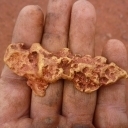
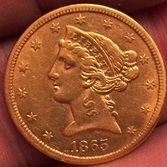

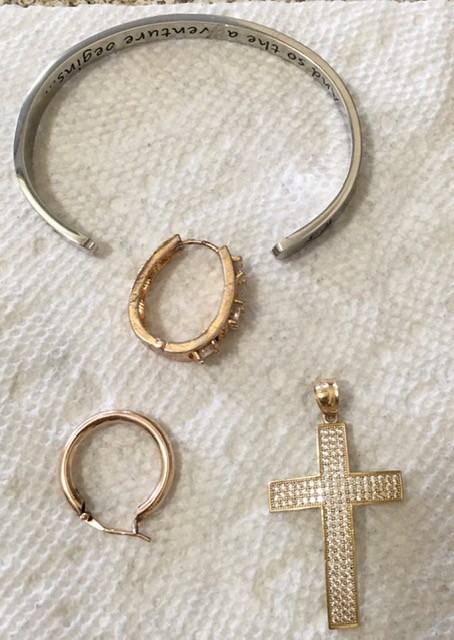
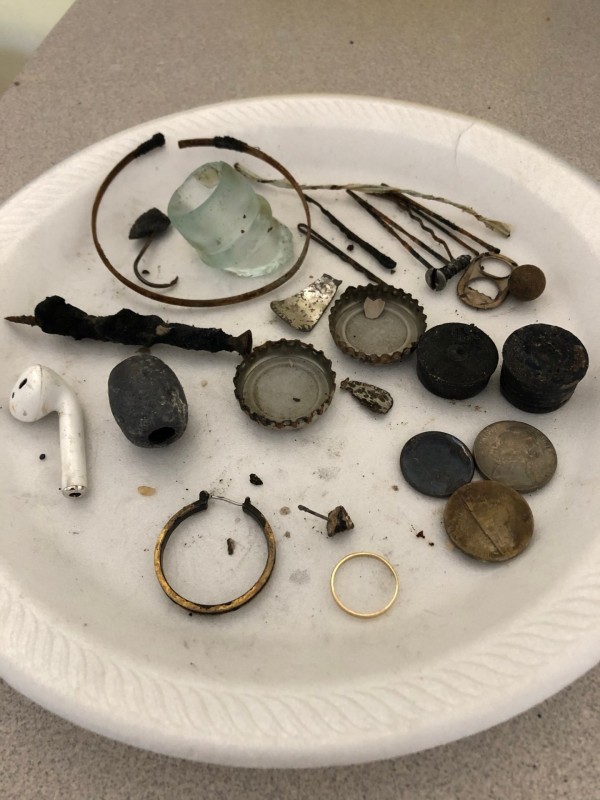
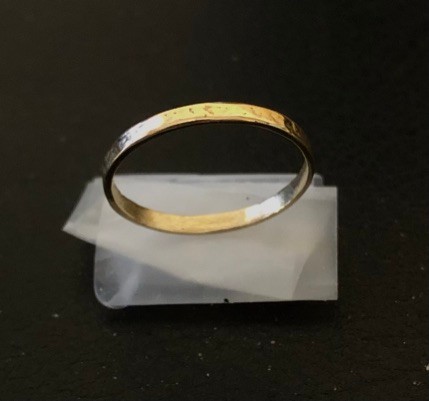
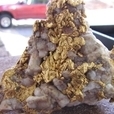

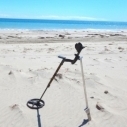

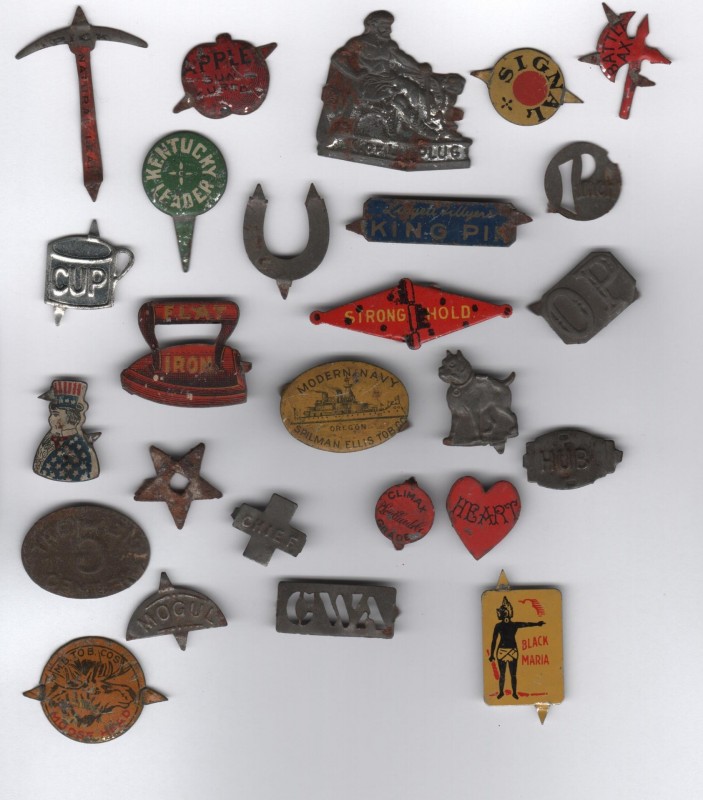
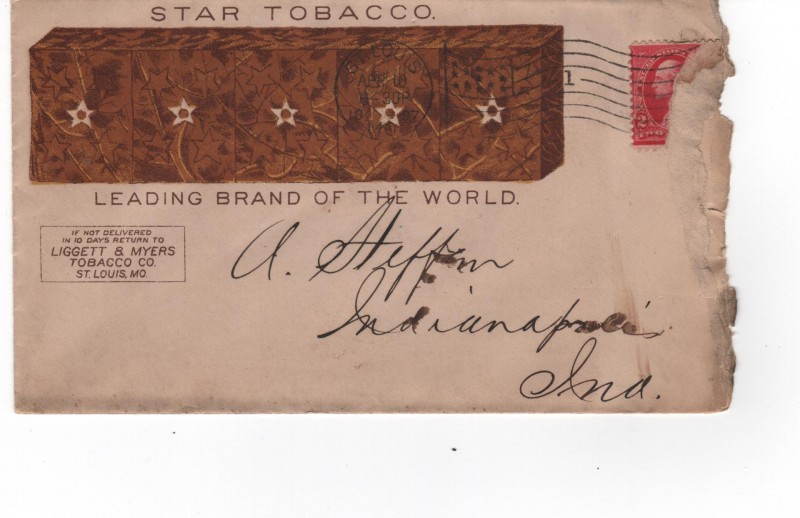
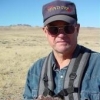
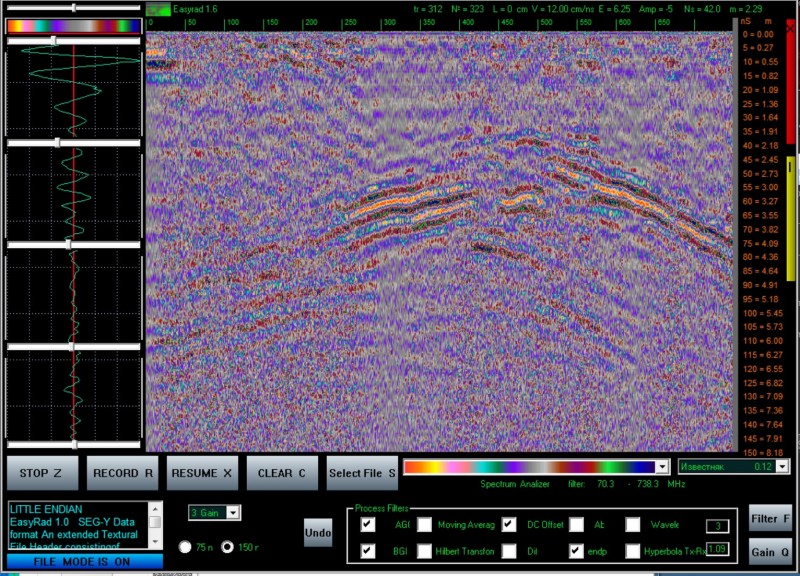
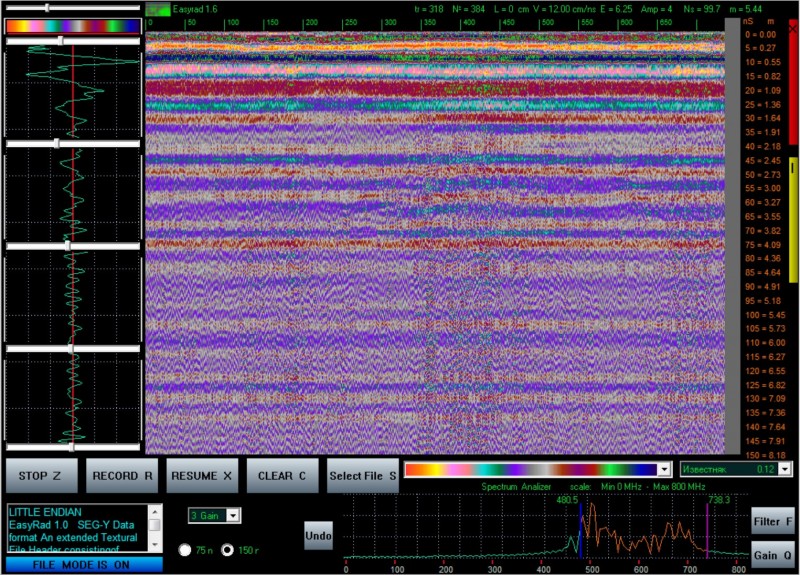
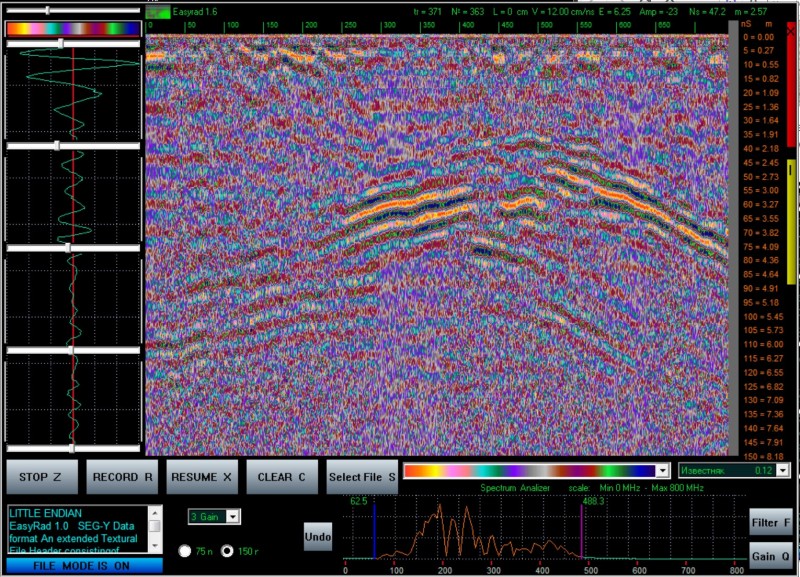




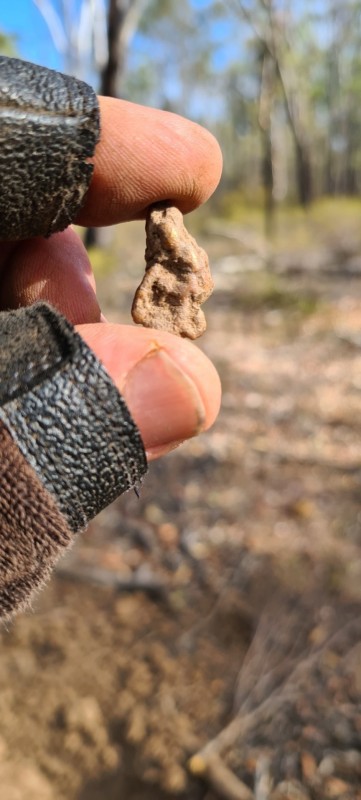
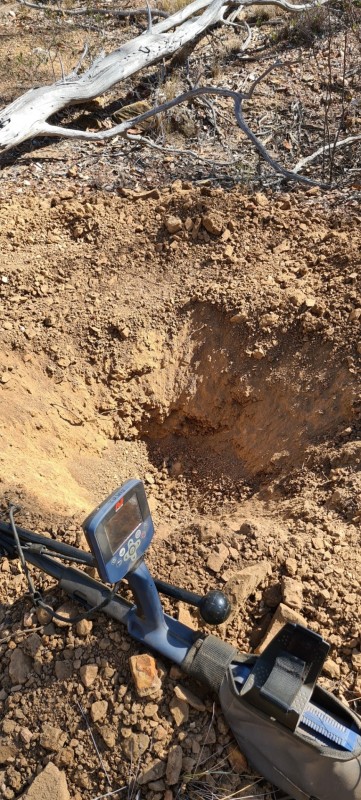
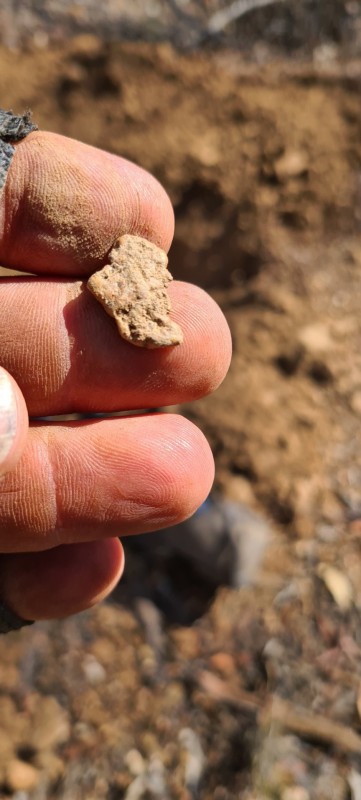
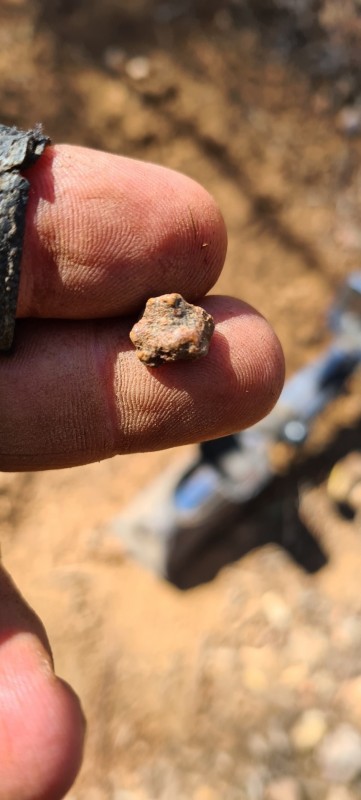
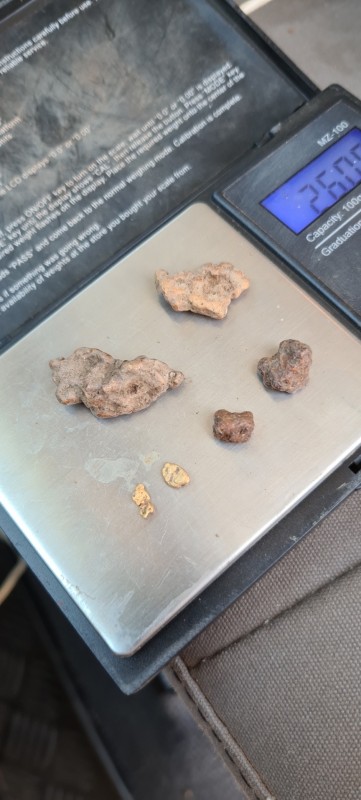
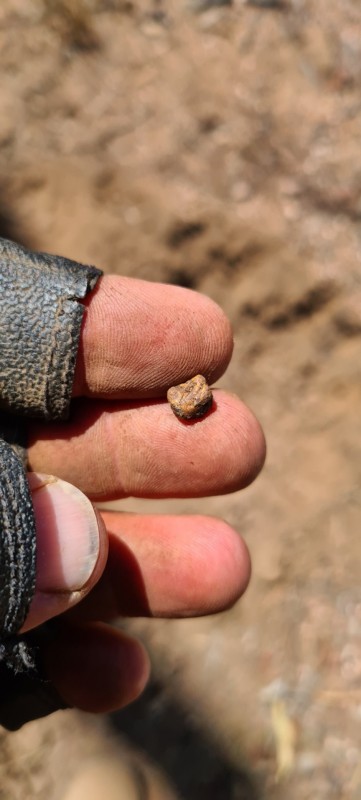
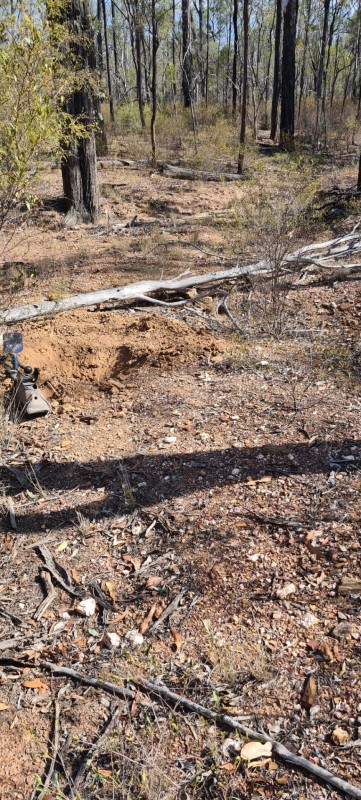
.thumb.jpg.008984156b596a0063f90b0d7fbc295b.jpg)
